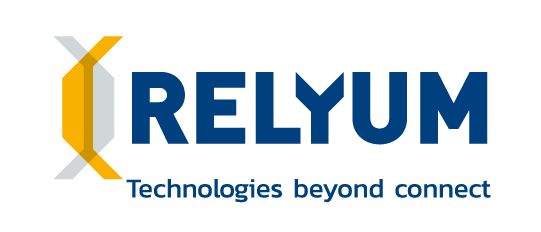
 RELY-TSN-PCIe
RELY-TSN-PCIe
TSN Bridge PCIe NIC

RELY-TSN-PCIe is the first out-of-the-box solution for TSN that allows seamless implementation of deterministic Ethernet networks and abstract user equipment and applications from these technical complexities.
This device combines in a single equipment PCIe TSN Endpoint and TSN Bridge functionalities and provides 3 external fiber or copper tri-speed Ethernet ports.
As an Endpoint, it offers the possibility to introduce TSN technology in the device where it is hosted, enabling a seamless integration in a deterministic and time aware network. These key features make RELY-TSN-PCIe platform the most reliable and multipurpose networking device for critical environments.
Features

Communications
- 3x Ethernet port
- Media options (SFP cages):
- 10/100/1000Base-T
- 1000Base-X
- 100Base-FX
- Optional Redundancy modes:
- IEC 62439-2 Clause 5 “Media Redundancy Protocol (MRP)”
- “Device Level Ring (DLR)” for Ethernet IP
- RSTP IEEE802.1w
- VLAN support
- Ethernet type based or IEEE 802.1P Traffic prioritization
- 1 PPS output
- PCIex1
- Seamless integration on old Legacy PCI Systems through optional adapte
Software features
- Ethernet network drivers available for most OS (Linux, Windows, WxWorks, etc.)
- IEEE 1588-2008 PTPv2 Ordinary Clock and Boundary Clock support
- Profiles: Default, Power, IEC 61850-9-3, AS
Processing performance
- On-board FPGA for high-speed network switching and PTP timestamping
- Multi-core CPU unit to support autonomous software application
 RELY-SYNC-HSR/PRP-PCIe
RELY-SYNC-HSR/PRP-PCIe
Time-aware Redbox-DAN PCIe NIC

RELY-SYNC-HSR/PRP-PCIe is a smart pluggable board that comprises in the same device hardware and software resources to implement specialized networking, synchronization and security oriented services.
It can be used in different applications as a multi-media PCIe Redbox-DAN, operating as an HSR/PRP node of a high-availability network and connecting an Ethernet network segment with an HSR/PRP network.
PCI Express (PCIe) is the most extended high-speed serial computer expansion bus. It is the de-facto standard for expansion boards in PC computers and it is gaining acceptance in Industrial PCs and even in SCADA systems.
The device uses dedicated hardware for low latency switching and for implementing high accuracy clock synchronization based on IEEE 1588 standard.
Features

Communications
- Autonomous management of Supervision Frames and IEEE 1588-2008 PTPv2 support
- Cut-through operation for the HSR ring to minimize the latency in the ring
- Store&forward for PRP and Ethernet operation
- 2x HSR/PRP/Ethernet ports
- 1x Ethernet port
- Media options (SFP cages):
- 10/100/1000Base-T
- 1000Base-X
- 100Base-FX
- Zero-Packet-Loss redundancy modes:
- IEC 62439-3 v3 Clause 5 “High-availability Seamless Redundancy (HSR)”
- Supported modes: H, N, T, U, X, HSR-SAN, PRP-HSR, HSR-HSR
- IEC 62439-3 v3 Clause 4 “Parallel Redundancy Protocol (PRP)”
- Supported modes: Duplicate discard, duplicate accept, transparent reception, PRP-HSR
- Optional Redundancy modes:
- IEC 62439-2 Clause 5 “Media Redundancy Protocol (MRP)”
- “Device Level Ring (DLR)” for Ethernet IP
- RSTP IEEE802.1w
- VLAN support
- Ethernet type based or IEEE 802.1P Traffic prioritization
- 1 PPS output
- PCIex1
- Seamless integration on old Legacy PCI Systems through optional adapter
Software features
- Ethernet network drivers available for most OS (Linux, Windows, WxWorks, etc.)
- IEEE 1588-2008 PTPv2 Ordinary Clock and Boundary Clock support
- Profiles: Default, Power, IEC 61850-9-3, AS
Processing performance
- On-board FPGA for high-speed network switching and PTP timestamping
- Multi-core CPU unit to support autonomous software application
Configuration & Management
- On-board integrated Web Server to provide HTML5-GUI configuration access:
- Accessible through HTTP(S)
- Configuration profiles and Firmware updates
- Real-time network monitoring
 RELY-SYNC-PCIe
RELY-SYNC-PCIe
Time-aware Switch PCIe NIC

RELY-SYNC-PCIe is a smart pluggable board that comprises in the same device hardware and software resources to implement specialized networking, synchronization and security oriented services.
It can be used as a multi-media PCIe Switch, providing 3+1 (PCIe) Gigabit Ethernet ports.
PCI Express (PCIe) is the most extended high-speed serial computer expansion bus. It is the de-facto standard for expansion boards in PC computers and it is gaining acceptance in Industrial PCs and even in SCADA systems.
The device uses dedicated hardware for low latency switching and for implementing high accuracy clock synchronization based on different standards such as IEEE 1588 or IRIGb.
Features

Communications
- Autonomous management of Supervision Frames and IEEE 1588-2008 PTPv2 support
- 3x Ethernet port
- Media options (SFP cages):
- 10/100/1000Base-T
- 1000Base-X
- 100Base-FX
- Optional Redundancy modes:
- IEC 62439-2 Clause 5 “Media Redundancy Protocol (MRP)”
- “Device Level Ring (DLR)” for Ethernet IP
- RSTP IEEE802.1w
- VLAN support
- Ethernet type based or IEEE 802.1P Traffic prioritization
- 1 PPS output
- PCIex1
- Seamless integration on old Legacy PCI Systems through optional adapter
Synchronization
- IEEE 1588-2008 PTPv2 Ordinary Clock (Master and Slave) and Boundary Clock support
- Profiles: Default, Power, IEC 61850-9-3, AS
- Optional IRIGb Master/Slave bridge
Software features
- Ethernet network drivers available for most OS (Linux, Windows, WxWorks, etc.)
- IEEE 1588-2008 PTPv2 Ordinary Clock and Boundary Clock support
- Profiles: Default, Power, IEC 61850-9-3, AS
Processing performance
- On-board FPGA for high-speed network switching and PTP timestamping
- Multi-core CPU unit to support autonomous software application
For more details, please see in the catalog.

